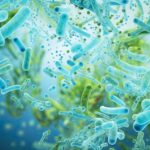• Shared microbes
• Transferring “good” bacteria
What is already known on this topic
Breast milk contains live bacteria that can play a critical role in infant health. But it’s unclear whether these microbes are able to transfer to the infant’s gut and whether this process is influenced by breast milk feeding practices.What this research adds
Researchers analyzed the microbiota of 1,249 mothers and their infants and found that certain bacteria, including Streptococcus and Veillonella, are present in both mothers’ milk and their babies’ stool. The researchers also found that this co-occurrence was higher for infants who nursed directly at the breast than for babies who received pumped breast milk.Conclusion
The findings suggest that bacteria in breast milk could be transferred to the infant’s gut and influence the developing gut microbiota.
Bacteria in breast milk could be transferred to the infant’s gut and influence the developing gut microbiota, according to a new study that analyzed more than 1,000 mothers and their infants.
The study, published in Cell Host & Microbe, is the first to evaluate the association of multiple breast milk feeding practices with infant gut microbiota composition during a baby’s first year, the researchers say.
“Our study confirms that breast milk is a major driver of infant gut microbiota development,” says study co-author Stuart Turvey at the University of British Columbia. “We found that breastfeeding exclusivity and duration was strongly associated with a baby’s overall gut microbiota composition and that breast milk bacteria shape a baby’s gut microbiome to a similar degree as other known modifiers of the gut microbiota such as birth mode—meaning a cesarean section or vaginal delivery,” Turvey says.
Breast milk is known to contain live bacteria that can play a critical role in infant health. But it’s unclear whether these microbes are able to transfer to the infant’s gut and whether this process is influenced by breast milk feeding practices.
To address this question, a team of researchers led by Turvey and Meghan Azad at the University of Manitoba analyzed the microbiota of 1,249 mothers and their infants, who were given breast milk for an average of nine months.
Shared microbes
The most prevalent bacteria of the infants’ gut were different from the most prevalent microbes of breast milk, except for Streptococcus and Veillonella, which were present in more than 60% of the samples. Streptococcus and Staphylococcus dominated milk, whereas Bifidobacterium and Bacteroides were more common in the infant gut.
At one year of age, babies who had been breastfed had higher levels of bacteria such as Streptococcus and Veillonella than infants who were no longer fed breast milk at three months. Those who were no longer fed breast milk had increased levels of bacterial species such as Blautia and Lachnospiraceae.
Transferring “good” bacteria
At three months, bacteria shared between the mothers’ milk and the babies’ gut included Streptococcus, Veillonella, Staphylococcus, and Bifidobacterium.
This co-occurrence was higher for infants who nursed directly at the breast than for babies who received pumped breast milk. What’s more, a type of Bifidobacterium was less prevalent in milk from mothers who pumped compared to those who breastfed. Bacteria such as Veillonella, Haemophilus parainfluenzae, and Actinomyces were also more prevalent in the gut of babies that were breastfed for longer.
The transfer of bacteria in breast milk could contribute to the beneficial health effects of breastfeeding observed in several studies, including lower rates of childhood asthma and obesity—conditions that have been linked to perturbations of gut microbiota during early life, the researchers say.
“These results advance the hypothesis that breast milk may act as an incubator that enriches, protects and transports certain bacteria to a baby’s intestinal tract,” says study co-author Brett Finlay. “This may give us clues about which bacteria could make good probiotics since they appear to withstand the trip to the baby’s gut,” he says.










